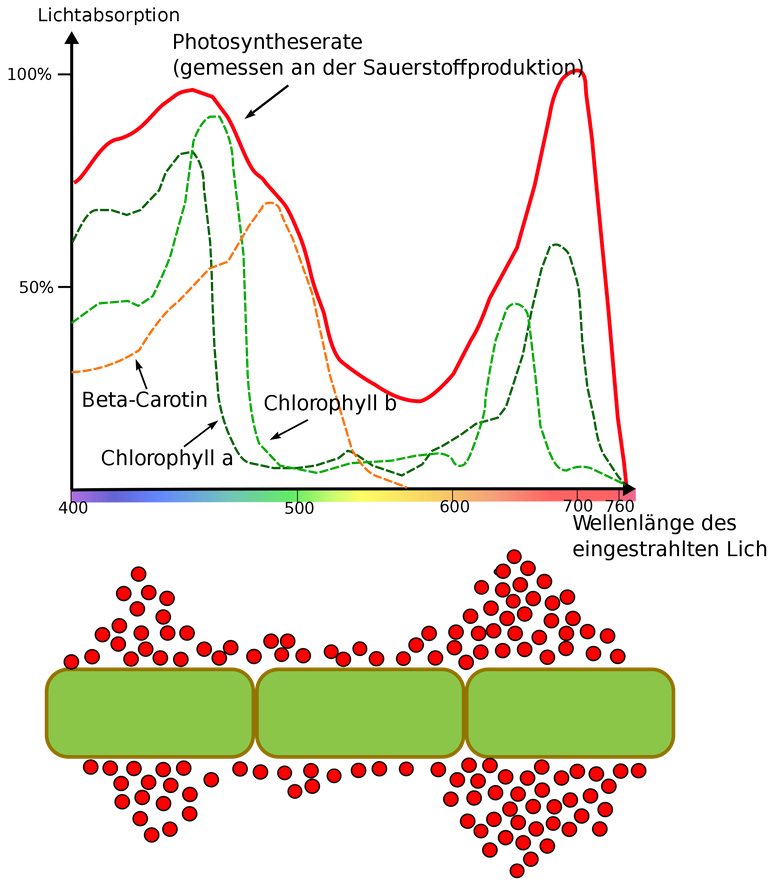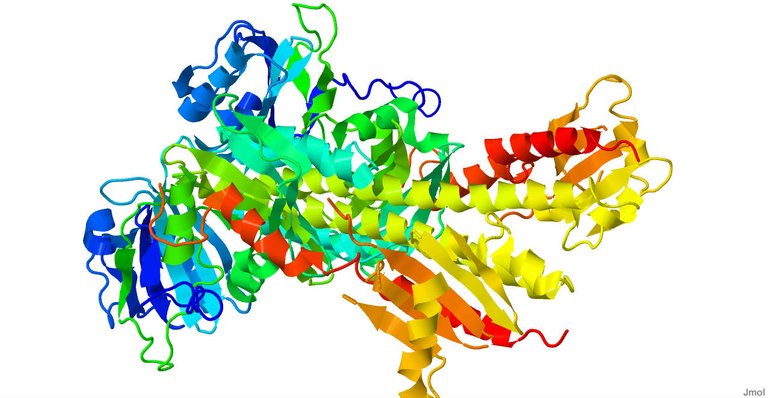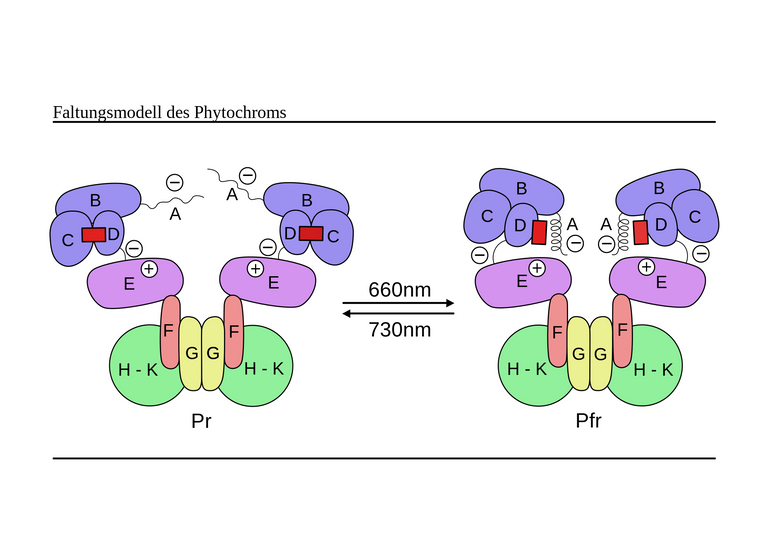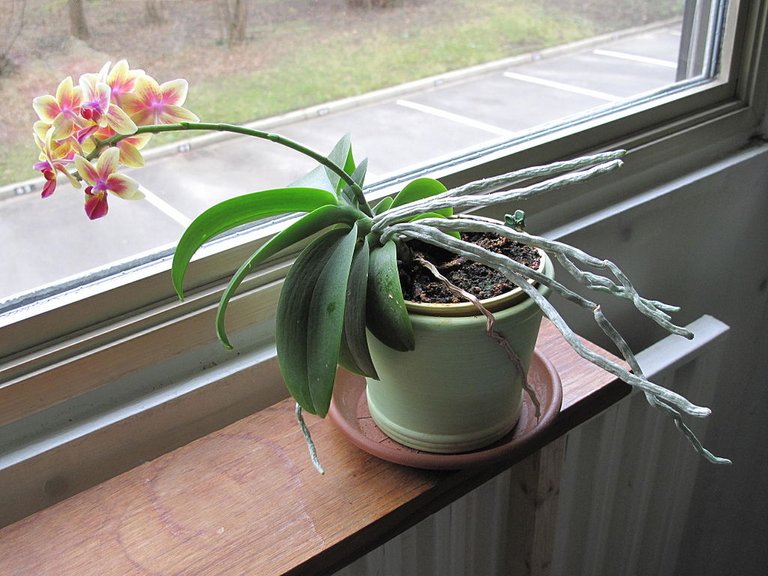postI saw an interesting question by @gregan in a by @budz82. In the post @budz82 had created an experiment to test the effects of different wavelengths of light on plant growth.
The original question by @gregan was:
Isn't color somewhat irrelevant? Photosynthesis only needs UV light, maybe that some colors block more of it than others?
I initially started writing this as a comment, but it grew to an unmanageable size and I thought it might be interesting to others.
I think it can be broken down into two components:
What wavelengths of light are used for photosynthesis?
Does light only influence plant development through photosynthetic rate?
What wavelengths of light are used for photosynthesis?
A scientist named T.W. Engelmann designed an experiment to answer this question during the nineteenth century. The experimental design was quite clever, in which he projected light through a prism(to separate the different wavelengths) onto a filament of green algae [1].
He then introduced bacteria that seek oxygen into the culture with the algae. Since oxygen will be higher where the photosynthesis is happening, the bacteria would be there in a higher concentration. So, he now had an indirect way to measure the rate of photosynthesis given the technology of the time. Here is a figure to illustrate this:

The solid red line in the plot is the total photosynthetic rate which is proportional to the number of bacteria at the location of that wavelength along the x-axis.
The diagram below the plot shows the filamentous algae in green with the bacteria in red.
So, wherever the red line is highest is where the most photosynthesis is happening. From this data we are able to draw some conclusions for this part of the question. The wavelengths of light most responsible for photosynthesis appear to be within the blues and reds.
Does light only influence plant development through photosynthetic rate?
In order to answer this question, we need to know whether there are any methods plants use to sense light apart from photosynthesis.
Scientists have actually identified multiple different proteins that can sense light and trigger developmental and physiological responses, and these can operate independently from photosynthesis [1].
One of these light sensing proteins is called a phytochrome which senses red and far-red light. They have been to influence many aspects of plant development including seed germination, growth rate, and flowering [1] [2] [3].

So how do these protein sensors have these effects? When exposed to the correct wavelength of light, the protein changes its three-dimensional shape(conformation) in some way.

The conformation change causes the protein to become activated, and it can then change which genes are turned on and off in the plant. This change in gene expression is what causes the long-term effects on plant growth and development. [1]
Another light sensitive protein is the phototropin. These proteins sense blue light and UV-A. They have also been implicated in some growth responses [1][4].
A classic example of this is phototropism which is when plants grow based on the direction of light. If you've ever seen something like this, then you have seen the power of these proteins.

From the examples we've seen above, I think it is safe to conclude that light can affect plant development independently of photosynthesis.
Concluding Remarks
Thank you for reading. I hope you enjoyed it and perhaps learned something new. Keep learning.
Sources
Images
Image 2: https://commons.wikimedia.org/wiki/File:3G6O.pdb.jpg
Image 3: https://commons.wikimedia.org/wiki/File:Pr_Pfr.svg
Image 4: https://commons.wikimedia.org/wiki/File:CRY1Pretty.png
Image 5: https://commons.wikimedia.org/wiki/File:Phototropism.jpg
References
[1] My primary reference was Plant Physiology by Taiz & Zeiger 5th edition chapters 7, 17 and 18.
Some online sources that might be helpful as a starting point for learning more are:
https://en.wikipedia.org/wiki/Theodor_Wilhelm_Engelmann
https://en.wikipedia.org/wiki/Action_spectrum
https://en.wikipedia.org/wiki/Phytochrome
This gem of a post was discovered by the OCD Team!
Reply to this comment if you accept, and are willing to let us promote your post!
If you accept this, you'll be nominated and the members of the OCD team will vote on whether we'll feature your post in our next compilation post.
You can follow @ocd – learn more about the project and see other Gems! We strive for transparency.
I'm mostly curating in #science and am always glad to see quality posts like yours peeking out between the garbage and plagiarism!
@suesa, I’d be honored to be considered for this.
Ah, I'm afraid your post's payout rose above the limit to be considered for ocd since I posted the comment. But I'll keep an eye out for your posts and might nominate another one in the future!
Quite interesting and an elaborate article, that indeed deserved it's own spotlight. Thanks for the read.
I'm glad you enjoyed it. I hope my passion for plant responses did not create too complicated an answer to your original question.
Really great post! Thank you @servusminervae! Resteemed:).
Thanks @arunaelentari, I'm glad you enjoyed the post.
When I saw to plot my first think was that is quite obvious that in green we have lowest photosyntesis.If most of plants are green it means that green wavelenght are reflected to our eyes, so the energy of green light is not used by pants.
Cześć @lipsz, I’m glad you enjoyed the post!
Yeah, that’s a logical conclusion, and a pretty good clue as to what wavelengths are used or not. I guess we couldn’t know for sure until an experiment was ran though, because there could always have been a major pigment not associated with photosynthesis which would lead us astray using this color observation method.
@servusminervae Really excellent post.
Thanks, I'm glad you found it interesting.
Congratulations @servusminervae! You have completed some achievement on Steemit and have been rewarded with new badge(s) :
<p dir="auto"><a href="http://steemitboard.com/@servusminervae" target="_blank" rel="noreferrer noopener" title="This link will take you away from hive.blog" class="external_link"><img src="https://images.hive.blog/768x0/https://steemitimages.com/70x80/http://steemitboard.com/notifications/voted.png" srcset="https://images.hive.blog/768x0/https://steemitimages.com/70x80/http://steemitboard.com/notifications/voted.png 1x, https://images.hive.blog/1536x0/https://steemitimages.com/70x80/http://steemitboard.com/notifications/voted.png 2x" /> Award for the number of upvotes received <p dir="auto">Click on any badge to view your own Board of Honor on SteemitBoard.<br /> For more information about SteemitBoard, click <a href="https://steemit.com/@steemitboard" target="_blank" rel="noreferrer noopener" title="This link will take you away from hive.blog" class="external_link">here <p dir="auto">If you no longer want to receive notifications, reply to this comment with the word <code>STOP <blockquote> <p dir="auto">By upvoting this notification, you can help all Steemit users. Learn how <a href="https://steemit.com/steemitboard/@steemitboard/http-i-cubeupload-com-7ciqeo-png" target="_blank" rel="noreferrer noopener" title="This link will take you away from hive.blog" class="external_link">here!Congratulations @servusminervae! You have completed some achievement on Steemit and have been rewarded with new badge(s) :
<p dir="auto"><a href="http://steemitboard.com/@servusminervae" target="_blank" rel="noreferrer noopener" title="This link will take you away from hive.blog" class="external_link"><img src="https://images.hive.blog/768x0/https://steemitimages.com/70x80/http://steemitboard.com/notifications/voted.png" srcset="https://images.hive.blog/768x0/https://steemitimages.com/70x80/http://steemitboard.com/notifications/voted.png 1x, https://images.hive.blog/1536x0/https://steemitimages.com/70x80/http://steemitboard.com/notifications/voted.png 2x" /> Award for the number of upvotes received <p dir="auto">Click on any badge to view your own Board of Honor on SteemitBoard.<br /> For more information about SteemitBoard, click <a href="https://steemit.com/@steemitboard" target="_blank" rel="noreferrer noopener" title="This link will take you away from hive.blog" class="external_link">here <p dir="auto">If you no longer want to receive notifications, reply to this comment with the word <code>STOP <blockquote> <p dir="auto">By upvoting this notification, you can help all Steemit users. Learn how <a href="https://steemit.com/steemitboard/@steemitboard/http-i-cubeupload-com-7ciqeo-png" target="_blank" rel="noreferrer noopener" title="This link will take you away from hive.blog" class="external_link">here!Your post was mentioned in the hit parade in the following category:Congratulations @servusminervae!